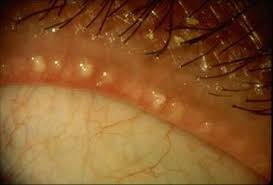Meibomian Gland Dysfunction Associated Dry Eye Disease
What is Meibomian Gland Dysfunction Associated Dry Eye Disease (MGD-DED)?
Meibomian gland dysfunction (MGD) is a chronic, diffuse abnormality of the meibomian glands, which secrete complex lipids called meibum onto the ocular surface. These complex lipids form the outermost layer of the tear film to prevent water evaporation and thus maintain tear film stability. MGD is commonly characterized by terminal duct obstruction and/or qualitative-quantitative changes in the glandular secretion. Multiple subtypes of MGD have been identified and all subtypes of MGD can lead to alterations of the tear film, symptoms of eye irritation, inflammation, and dry eye. As a result, MGD is one of the main causes of evaporative dry eye disease (DED).

Current Treatment
Physicians often prescribe artificial tears to provide temporary relief of dry eye symptoms, antibiotics for infections, cyclosporine to suppress the immune system, and steroids to ease inflammation. In the office, physicians also use devices (e.g. LipiFlow® thermal pulsation system and MGP) that send heat, pulsed light and medical probe to open blocked meibomian glands and improve symptoms. However, this approach has shown limited success as it fails to address the underlying Meibomian gland dysfunction that contributes to the early development of DED.
We are developing eye drops with a novel mechanism of action to improve meibum quality and meibomian gland health and to alleviate dry eye related issues. This new drug can potentially provide symptom relief and sign improvement to patients with MGD-DED
